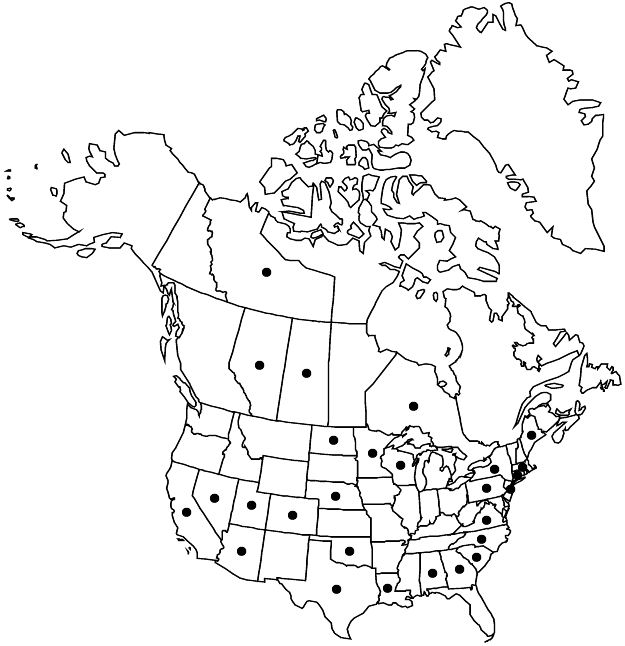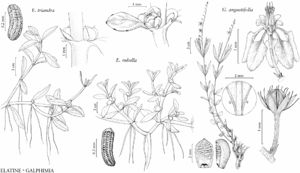Elatine triandra
Bot. Handb. 1: 345, plate 109b, fig. 2. 1789–1791.
Herbs, submersed, 2–10 cm. Stems prostrate, highly branched. Leaves light green to green; stipules triangular or ovate-lanceolate, 0.7–1 mm, margins dentate, apex acute or obtuse; petiole 0–3 mm; blade linear, lanceolate, or narrowly oblong, 3–10 × 1.5–3.5 mm, base attenuate, apex acute or obtuse. Pedicels 0.3–0.4 mm, erect. Flowers: sepals (2–)3(–4), usually 1 reduced, ovate, 0.5(–0.7) × 0.2–0.4 mm; petals 3, white or reddish, widely ovate or elliptic, 0.6–1.2 × 0.5 mm; stamens 3; styles 3. Capsules compressed-globose, 3-locular, 1.2–1.7[–2] mm diam. Seeds 10–25 per locule, oblong, straight or slightly curved, 0.4–0.5 × 0.1–0.2 mm; pits angular-hexagonal, length 2–3 times width, in 6–8 rows, 16–25 per row. 2n = ca. 40.
Phenology: Flowering summer–early fall.
Habitat: Shores, pools.
Elevation: 0–1100(–2500) m.
Distribution

Alta., N.W.T., Ont., Sask., Ala., Ariz., Calif., Colo., Conn., Ga., La., Maine, Mass., Minn., Nebr., Nev., N.J., N.Y., N.C., N.Dak., Okla., Pa., S.C., Tex., Utah, Va., Wis., e, se Asia, also introduced in South America (Brazil), Europe, Africa, Australia.
Discussion
Elatine triandra is a popular aquarium plant. Reports of E. triandra from Yukon were based on misidentification of Callitriche hermaphroditica (B. Bennett et al. 2010). Elatine triandra is a common weed in rice fields of south and southeast Asia (K. Moody 1989), thus rice farming or aquarium trade may have been responsible for its introduction.
Selected References
None.
